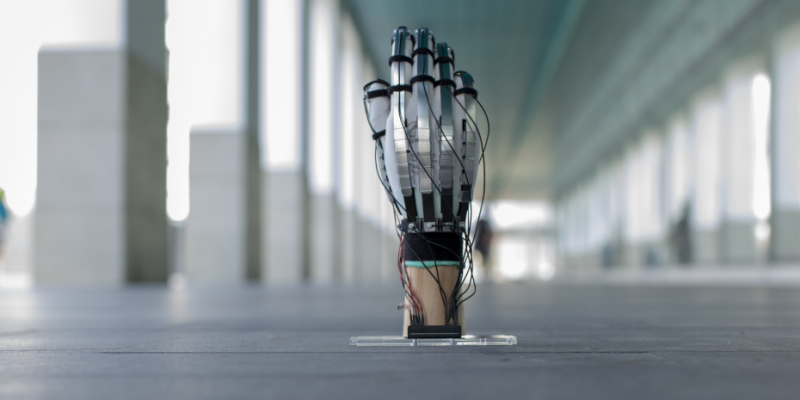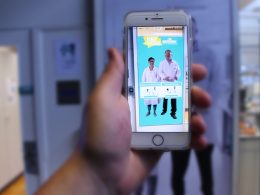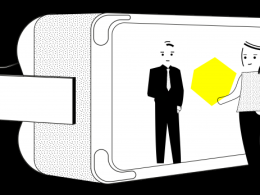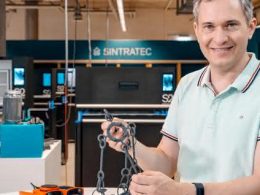Researchers at ETH Zurich and EPFL have developed an ultra-light glove that allows its users to "touch" and manipulate virtual objects. The glove, called DextrES, weighs less than eight grams and gives the wearer extremely realistic haptic feedback. It also offers unprecedented freedom of movement thanks to future battery operation.
Engineers and software developers around the world are working on the development of technologies that allow users to touch, grasp and manipulate virtual objects - with the same feeling as if they were touching something in the real world. Researchers at EPFL and ETH Zurich have just taken an important step towards this goal with this new, haptic glove. The DextrES not only impresses with its low weight, but also provides extremely realistic feedback. It is also capable of generating a holding force of up to 40 newtons on each finger with a voltage of 200 volts and just a few milliwatts of power. And last but not least, it has the potential to be operated with a very small battery in the future. These properties, combined with the glove's small form factor - it is just 2 mm thick - result in unrivalled precision and freedom of movement.
"Our aim was to develop a lightweight device that - unlike existing virtual reality gloves - does not require a bulky exoskeleton, pumps or very thick cables," explains Herbert Shea, Head of the Soft Transducers Laboratory (LMTS) at EPFL. DextrES has been successfully tested by volunteers at ETH Zurich and will be presented to an expert audience at the upcoming ACM Symposium on User Interface Software and Technology (UIST).
Fabrics, metal strips and electricity
The glove is made of cotton and thin, elasticated metal straps that run over the fingers. These bands are separated from each other by a thin insulator. When the wearer's fingers come into contact with a virtual object, the control unit applies a voltage difference between the metal bands, which causes them to stick together due to electrostatic attraction. This in turn generates a braking force that blocks the movements of the fingers or thumb. As soon as the voltage is interrupted, the metal bands slide smoothly again and the wearer can move their fingers freely.
Tricking the brain
At present, DextrES is still supplied with power via a very thin electrical cable. However, thanks to the low voltage and power required, a small battery could eventually take over this task. "The system requires so little power because it doesn't generate motion, but slows it down," says Shea. Further tests are now needed to find out how accurately real conditions need to be simulated to give the user a realistic experience. "The human sensory system is highly developed and highly complex. In the finger joints and embedded in the skin, we have a high density of different receptors. The reproduction of realistic feedback when interacting with virtual objects is therefore a major challenge that is currently still unresolved. Our work is taking a step in this direction by focussing in particular on kinaesthetic feedback," explains Otmar Hilliges, Head of the Advanced Interactive Technologies Lab at ETH Zurich.
As part of this joint research project, the hardware was developed at EPFL's Microcity campus in Neuchâtel, while the virtual reality system was created and the user tests carried out at ETH Zurich. "Our partnership with the LMTS Lab at EPFL has proven to be spot on. It allows us to tackle one of the oldest challenges in the field of virtual reality with a speed and precision that would not otherwise be possible," adds Hilliges.
The next step will now be to increase the scale of the device and use it on other parts of the body using a conductive fabric. "Gamers are the biggest market today. However, there are numerous other potential areas of application, particularly in the healthcare sector - for example for training surgeons. The technology could also be used in augmented reality applications," says Shea.









